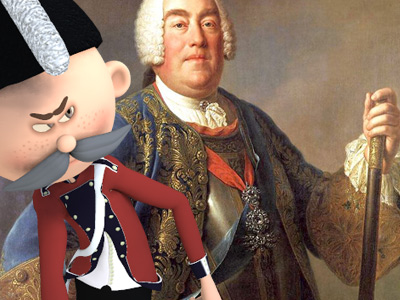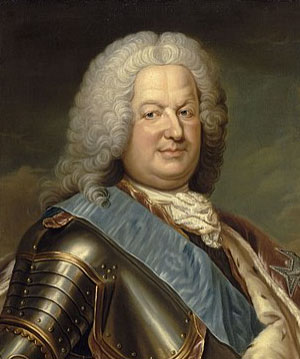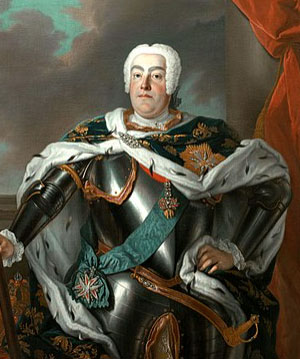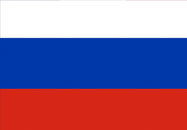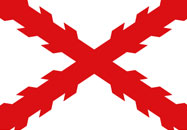War of the Polish Succession (1733–1738)
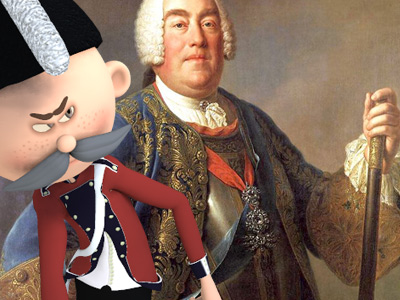
Background
After Sigismund II Augustus (d. 1572), each King of Poland was elected by the Szlachta (the Polish nobility) in the Sejm (Parliament). As a result, the kings had little formal power. But the Sejm was often paralyzed by the Liberum Veto, the right of any member of the Sejm to block its decisions. Poland's neighbors often influenced the Sejm, and by the early 18th century the democratic system was in decline.
Elector Augustus the Strong of Saxony had become king in 1697, with the backing of Austria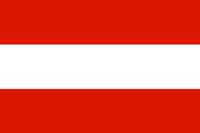 The Archduchy of Austria was a major principality of the Holy Roman Empire and the nucleus of the Habsburg monarchy. With its capital at Vienna, the archduchy was centered at the Empire's southeastern periphery. The archduchy's history as an imperial state ended with the dissolution of the Holy Roman Empire in 1806. It was replaced with the Lower and Upper Austria crown lands of the Austrian Empire. and Russia
The Archduchy of Austria was a major principality of the Holy Roman Empire and the nucleus of the Habsburg monarchy. With its capital at Vienna, the archduchy was centered at the Empire's southeastern periphery. The archduchy's history as an imperial state ended with the dissolution of the Holy Roman Empire in 1806. It was replaced with the Lower and Upper Austria crown lands of the Austrian Empire. and Russia Russian Empire was an empire and the final period of the Russian monarchy from 1721 to 1917, ruling across large parts of Eurasia. The rise of the Russian Empire coincided with the decline of neighbouring rival powers: the Swedish Empire, the Polish–Lithuanian Commonwealth, Qajar Iran, the Ottoman Empire, and Qing China. Russia remains the third-largest empire in history, surpassed only by the British Empire and the Mongol Empire.. In 1705, during the Great Northern War, Charles XII of Sweden deposed Augustus and installed Stanisław I as king. After Charles' defeat by Russia at Poltava in 1709, Stanisław fled to France
Russian Empire was an empire and the final period of the Russian monarchy from 1721 to 1917, ruling across large parts of Eurasia. The rise of the Russian Empire coincided with the decline of neighbouring rival powers: the Swedish Empire, the Polish–Lithuanian Commonwealth, Qajar Iran, the Ottoman Empire, and Qing China. Russia remains the third-largest empire in history, surpassed only by the British Empire and the Mongol Empire.. In 1705, during the Great Northern War, Charles XII of Sweden deposed Augustus and installed Stanisław I as king. After Charles' defeat by Russia at Poltava in 1709, Stanisław fled to France The Kingdom of France is the historiographical name or umbrella term given to various political entities of France in the medieval and early modern period. It was one of the most powerful states in Europe since the High Middle Ages. It was also an early colonial power, with possessions around the world. Colonial conflicts with Great Britain led to the loss of much of its North American holdings by 1763. The Kingdom of France adopted a written constitution in 1791, but the Kingdom was abolished a year later and replaced with the First French Republic., and Augustus was restored. In 1725, his daughter Maria married King Louis XV of France.
The Kingdom of France is the historiographical name or umbrella term given to various political entities of France in the medieval and early modern period. It was one of the most powerful states in Europe since the High Middle Ages. It was also an early colonial power, with possessions around the world. Colonial conflicts with Great Britain led to the loss of much of its North American holdings by 1763. The Kingdom of France adopted a written constitution in 1791, but the Kingdom was abolished a year later and replaced with the First French Republic., and Augustus was restored. In 1725, his daughter Maria married King Louis XV of France.

Stanisław I, painting by Jean-Marc Nattier
Augustus tried to make the Polish crown hereditary in his family, but failed. So when he died in 1733, Stanisław hoped to regain the throne. He was backed by his son-in-law Louis XV, who wanted to counter Russian and Austrian power by renewing France's traditional alliance with Poland.
In 1732 Empress Anna of Russia, Holy Roman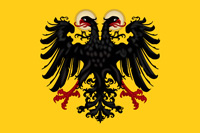 The Holy Roman Empire was a political entity in Western, Central, and Southern Europe that developed during the Early Middle Ages and continued until its dissolution in 1806 during the Napoleonic Wars. From the accession of Otto I in 962 until the twelfth century, the Empire was the most powerful monarchy in Europe. The empire reached the apex of territorial expansion and power in the mid-thirteenth century, but overextending led to partial collapse. Emperor Charles VI and King Frederick William I of Prussia
The Holy Roman Empire was a political entity in Western, Central, and Southern Europe that developed during the Early Middle Ages and continued until its dissolution in 1806 during the Napoleonic Wars. From the accession of Otto I in 962 until the twelfth century, the Empire was the most powerful monarchy in Europe. The empire reached the apex of territorial expansion and power in the mid-thirteenth century, but overextending led to partial collapse. Emperor Charles VI and King Frederick William I of Prussia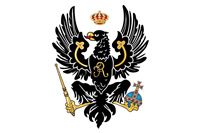 The Kingdom of Prussia was a German kingdom that constituted the state of Prussia between 1701 and 1918. It was the driving force behind the unification of Germany in 1871 and was the leading state of the German Empire until its dissolution in 1918. Although it took its name from the region called Prussia, it was based in the Margraviate of Brandenburg. Its capital was Berlin., irritated with Augustus but unwilling to allow Stanisław to become king, secretly signed Löwenwolde's Treaty, in which they agreed to back Infante Manuel of Portugal for the Polish throne.
The Kingdom of Prussia was a German kingdom that constituted the state of Prussia between 1701 and 1918. It was the driving force behind the unification of Germany in 1871 and was the leading state of the German Empire until its dissolution in 1918. Although it took its name from the region called Prussia, it was based in the Margraviate of Brandenburg. Its capital was Berlin., irritated with Augustus but unwilling to allow Stanisław to become king, secretly signed Löwenwolde's Treaty, in which they agreed to back Infante Manuel of Portugal for the Polish throne.
France's prime minister, Cardinal Fleury, saw the Polish struggle as a chance to strike at the Austrian monarchy in the west without seeming to be the aggressor. While he cared little for who should become King of Poland, the cause of the King's father-in-law was a sympathetic one. He also hoped to use the war to humble Austria, and perhaps secure the long-desired Duchy of Lorraine from Duke Francis Stephen, who was unofficially betrothed to Emperor Charles's daughter and heir Maria Theresa. Their marriage would bring Austrian power dangerously close to France. Fleury's diplomatic moves brought into the war additional powers with no interest in Polish affairs and politics, most notably Spain The Spanish Empire was a colonial empire governed by Spain and its predecessor states between 1492 and 1976. One of the largest empires in history, it was the first to usher the European Age of Discovery and achieve a global scale, controlling vast territory. It was one of the most powerful empires of the early modern period, reaching its maximum extent in the 18th century. and King Charles Emmanuel III of Sardinia, who was also Duke of Savoy.
The Spanish Empire was a colonial empire governed by Spain and its predecessor states between 1492 and 1976. One of the largest empires in history, it was the first to usher the European Age of Discovery and achieve a global scale, controlling vast territory. It was one of the most powerful empires of the early modern period, reaching its maximum extent in the 18th century. and King Charles Emmanuel III of Sardinia, who was also Duke of Savoy.
HISTORY
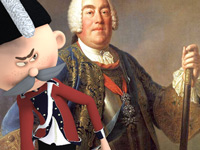
RESOURCES
This article uses material from the Wikipedia article "War of the Polish Succession", which is released under the Creative Commons Attribution-Share-Alike License 3.0.
© Stories Preschool. All Rights Reserved.
